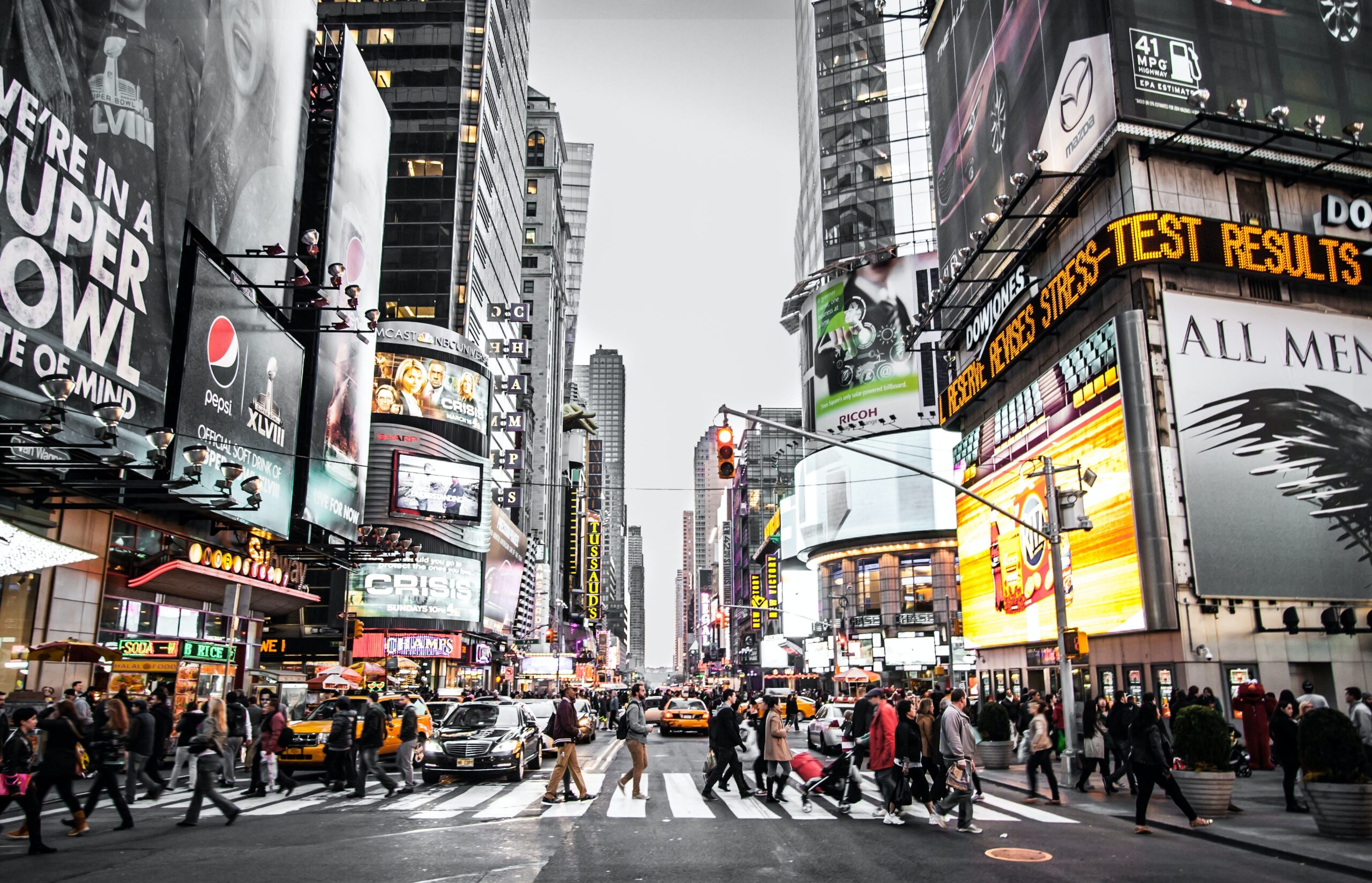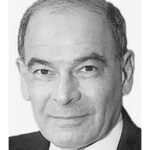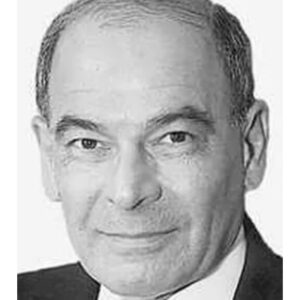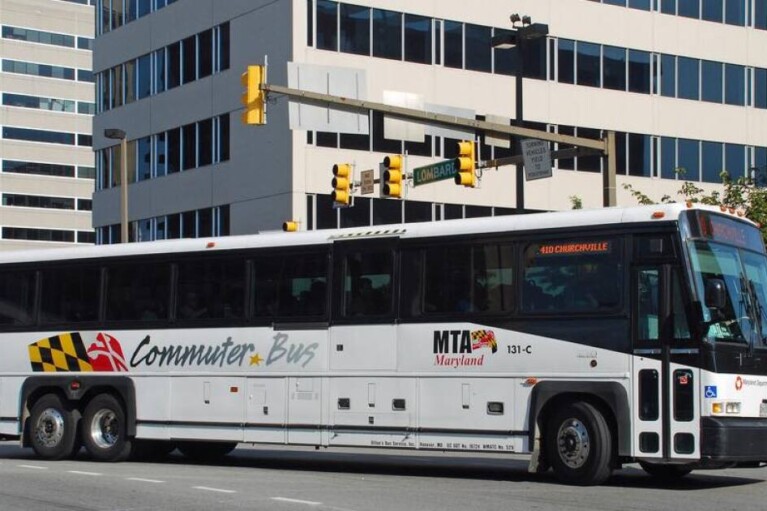Frank DeFilippo: Pas de Deux? Baltimore Punks New York, Gets Even for Moses’ ‘Road to Nowhere’

Part Two: It took several years, but Baltimore stumbled into a way, purely by circumstance, to get even with New York for sending Robert Moses to promote the “road to nowhere” and leave an unsightly scar through the center of the city.
For a vengeful poke back, Baltimore unleashed a manic marplot, one Henry Barnes, on the Big Apple to untangle its traffic and anger Moses. And in the end, in a perverse way, Baltimore may have done New York a favor.
Just who, you may ask, is Henry Barnes, an obscure name, a dyspeptic cigar-chomper, identified more with the past than the present, and one that toggles eccentricities unheard of in these hurry-up days of mass movement.

Frank A. DeFilippo
Barnes is the name associated with a joyous jumble of human bodies scrambling across an intersection during a red-lighted recess in traffic flow, called the “Barnes Dance” or the “Barnes Shuffle.”
Barnes did not create the Barnes dance; he popularized the traffic terpsichore. The shuffle reached its apogee in the 1950s-60s, when he introduced the pedestrian quick-step to Baltimore, and later to New York. Today, the Barnes dance is an exercise in footwork practiced, to one step or another, all over the world.
Barnes, though, first introduced the scramble to his hometown of Denver, when he noticed his daughter’s difficulty crossing the street on her way to school. At the same time, the shuffle, or dance, or whatever, was being tested separately in Kansas and Vancouver.
A snub, a rejection, by Baltimore landed Barnes in New York. Barnes became traffic commissioner of New York City in 1962, when Baltimore Mayor Harold J. Grady refused to match New York’s salary offer of $27,500 and a budget and staff many times over what Barnes had in Baltimore.
Barnes had been lured to Baltimore in 1953 by Mayor Thomas D’Alesandro Jr. at a salary of $18,000, $3,000 more than his own compensation as the city’s top elected official.
There, in New York, began Barnes’ feisty clashes with road-builder Robert Moses who, in the 1940s had convinced Baltimore’s elected officials that the city urgently needed an East-West Expressway to accommodate its growing traffic needs – eventually the “road to nowhere” – a project begun and later abandoned that the city has regretted ever since.
Barnes complained publicly that Moses’ highways, bridges and tunnels dumped traffic into New York City with no planning or consideration of how to move the cars from those points onward.
The Barnes dance, or shuffle, was a pedestrian ballet, a movement of protoplasm choreographed by humanity itself – a foxtrot, cha-cha, merengue, waltz, or just a plain old walk – moving in unison across an elastic X from diagonal corner-to-corner, jostling every which way the many feet pointed.
Essentially, to make the shuffle work, traffic was shut down by simultaneous red traffic lights in every direction, allowing about 1 ½ minutes or more for pedestrians to chart their competing paths through an intersection and to scramble to the opposite side of the crossing.
Barnes’ initial experiment with the innovative crossing pattern in Baltimore occurred in October 1953, at Hanover St. and Patapsco Ave., in Brooklyn, an industrial section of South Baltimore.
There is no readily accessible list of the Baltimore intersections that Barnes transformed into Arthur Murray-like dance-floor patterns. But he left an autobiographical trail of one-way streets, emergency snow plans, no parking zones, no-left-turn signs and an electronically controlled signal system that was described as one of the most advanced of its kind at the time, according to The Baltimore Sun.
Barnes’ decade in Baltimore was covered as diligently as any public figure. It was a time when Baltimore’s three daily newspapers, The Sun, The Evening Sun and The News American were thriving and had beat reporters covering traffic developments along with other dedicated areas of daily reportage.
In fact, reporters for The News American (my alma mater) hounded Barnes long after he departed Baltimore for New York about some alleged trail of taint that he left behind, possibly a holdover from the paper’s pursuit of a suspected conflict of interest. The profane phone exchanges penetrated the normal clatter of the newsroom.
Barnes had formed a side-line private consulting company with two of his assistants. Earlier, an investigation concluded that poor judgment but no conflict occurred, according to published writings of the Maryland Historical Society.
In New York, Barnes’ first experiments with the scramble were at Vanderbilt Ave. and 42d St., Wall St., 42d St. at Fifth Ave., Madison Ave., and in Brooklyn. At their high-point, Barnes had converted 635 intersections into pedestrian dance stages, while 86 remain in active use, according to various reports.
The clash between Barnes and Moses was inevitable: Barnes was a people-mover; Moses was a builder and one-man traffic jam. Moses was responsible for building 12 bridges and 35 highways as well as 658 playgrounds and 2 million acres of parks, according to the New York Daily News.
Barnes’ interest was in keeping traffic and people moving. He viewed Moses as a human obstruction. Barnes died on the job of a heart attack in 1968 – at about the same period as Moses was dethroned from his princeling perch as New York’s master builder.
But Barnes’ legacy lives on.
In Baltimore, in 2016, the Department of Transportation reprised the Barnes dance briefly, as a whimsical but sentimental demonstration at the Inner Harbor intersection of Pratt and Gay Sts. It was met by new generations with a mixture of delight, scorn and puzzlement.
In Washington, two Barnes dance intersections have been established – one in 2010 at 7th and H Strees NW, in Chinatown, and the other in 2017 at 14th and Irving Streets NW.
Yes, Barnes scrambles are everywhere in America. They are prevalent across the state in California, notably in San Francisco, even along Los Angeles’ haute Zip code of Rodeo Drive.
In China, Shanghai, as of 2018, had 11 major intersections equipped with scrambles.
In Japan, the Barnes dance is very common. There are 300 intersections where the dance is done. The most famous crossing is in Tokyo outside of Shibuya Station, where more than 3,000 pedestrians can cross in one scramble.
Other nations where the scrambles are popular are Luxembourg, Mexico, The Netherlands, New Zealand, Sweden, Taiwan and the United Kingdom.
Yet the Barnes dance was abandoned decades ago in Baltimore, one of the cities that brought the balletic riff to prominence, a victim of changing times and civic demands.




 Creative Commons Attribution
Creative Commons Attribution